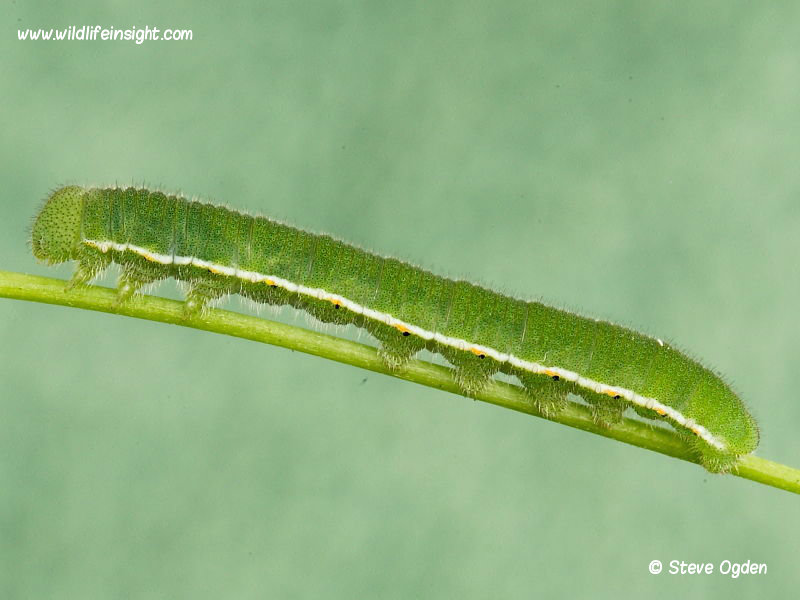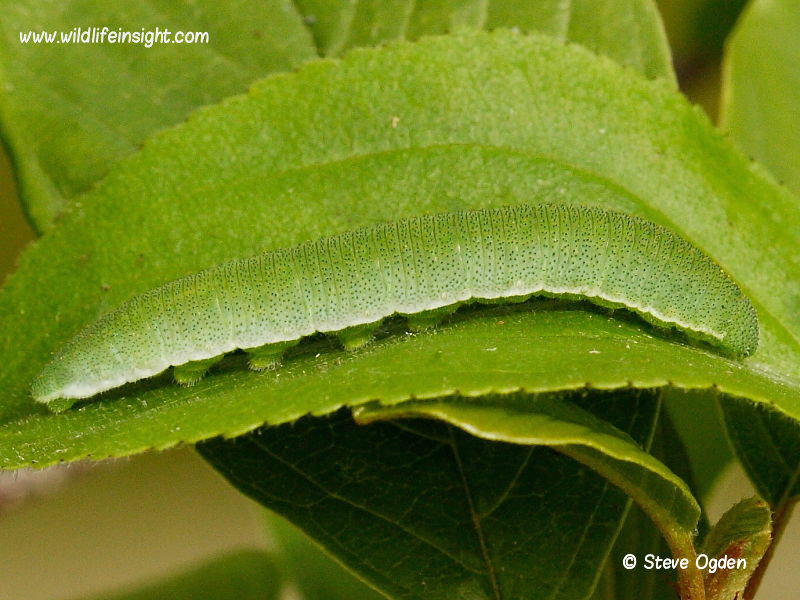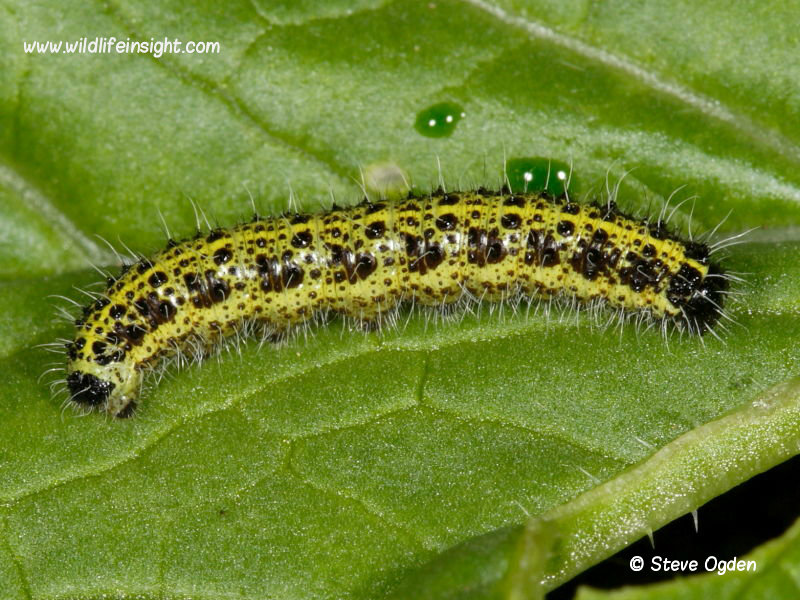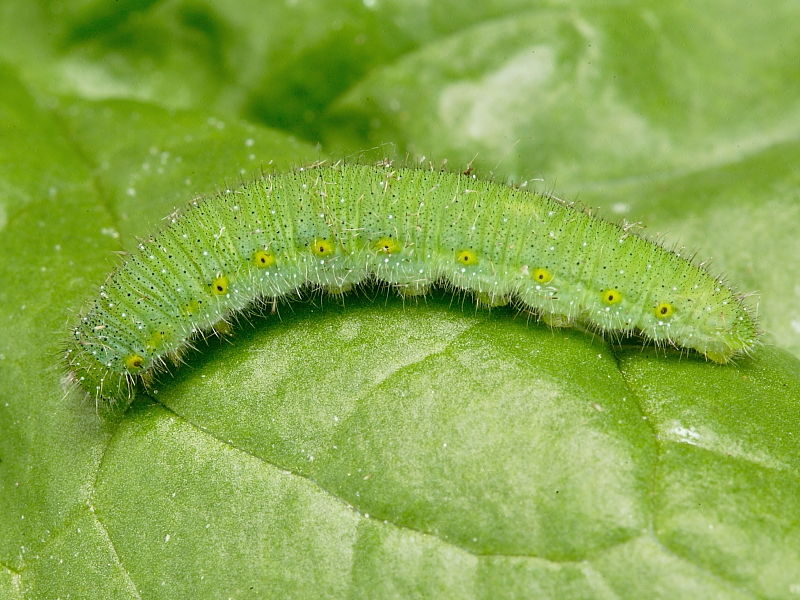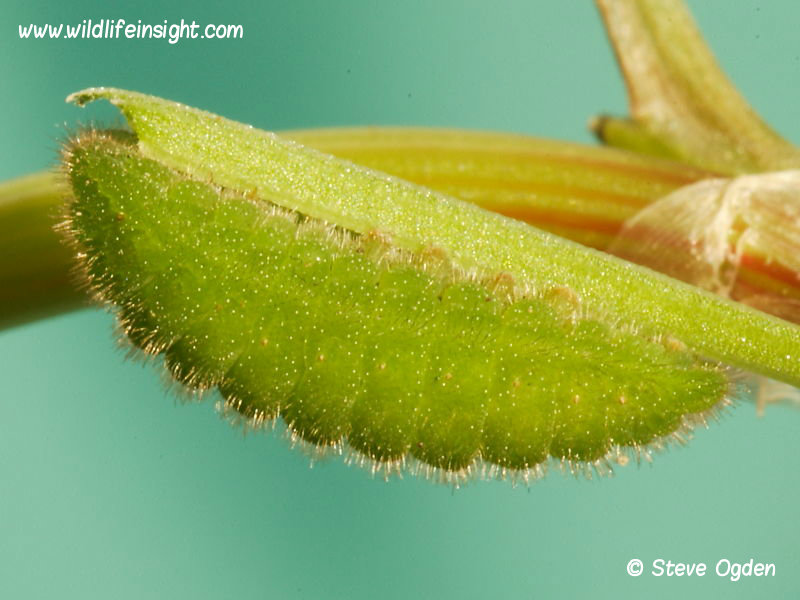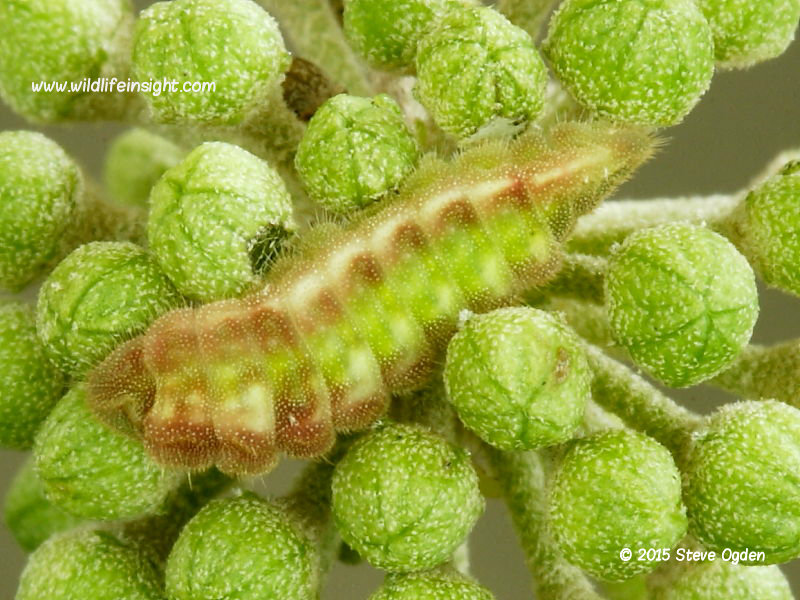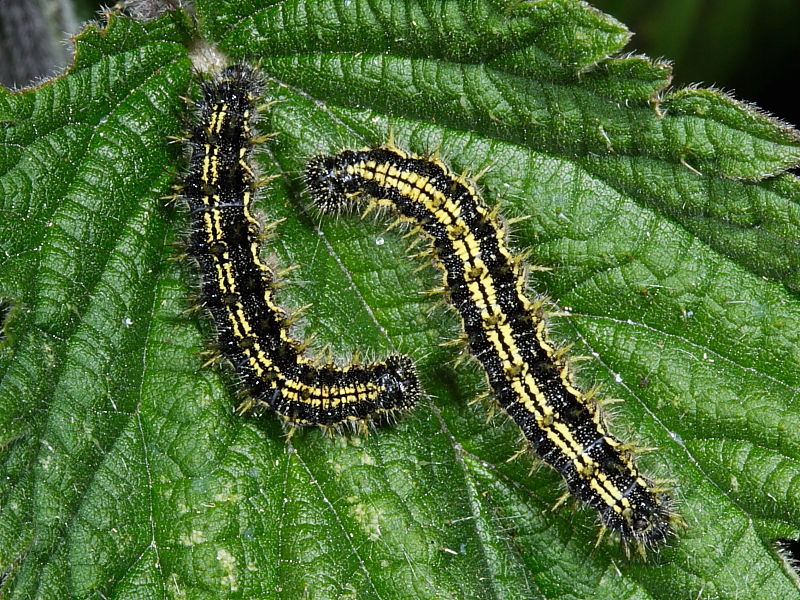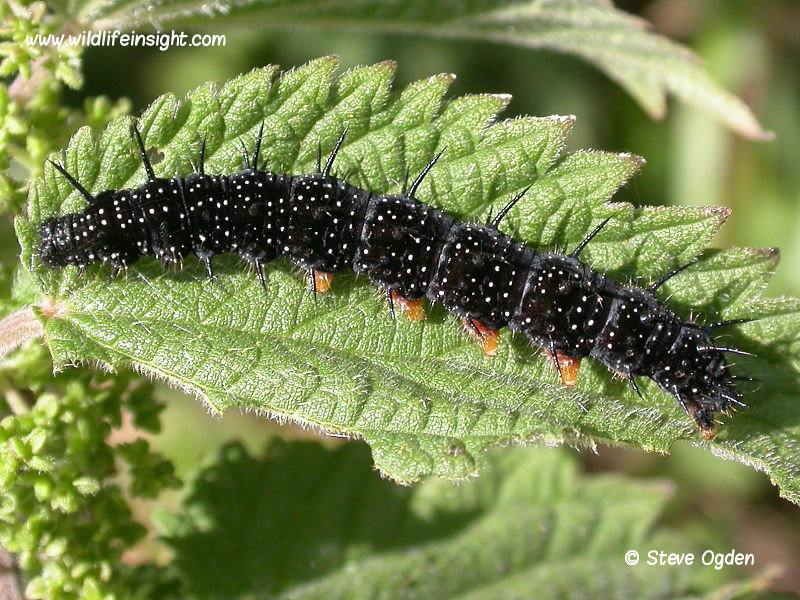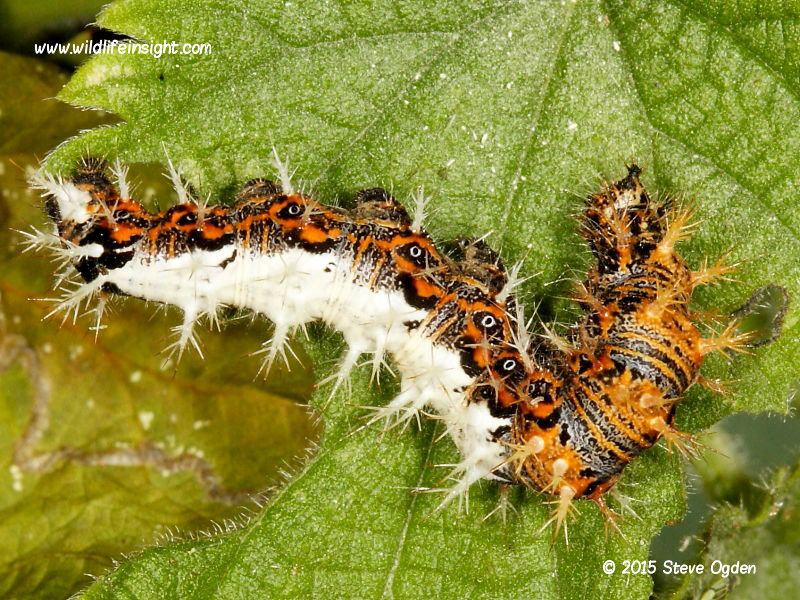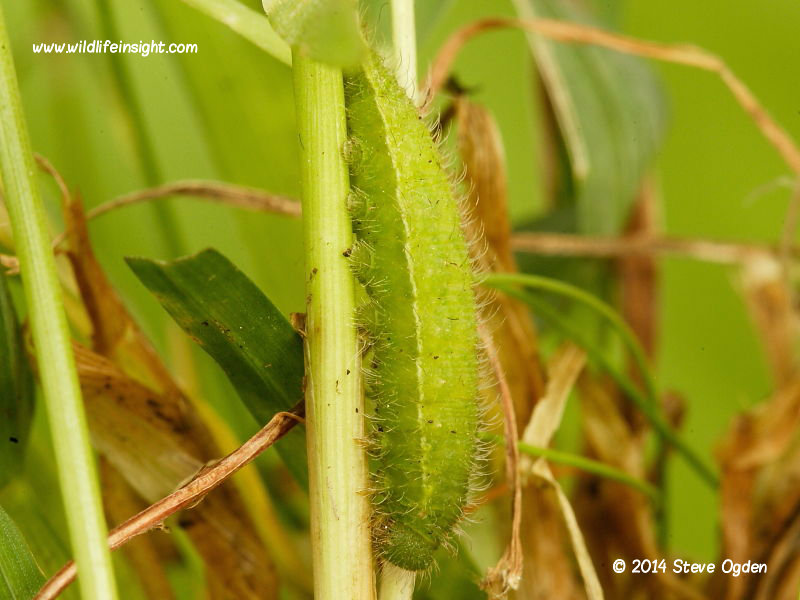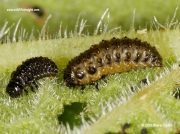Introduction to the British Butterfly Caterpillar Photo Gallery
This gallery includes photographs of the most commonly recorded butterfly caterpillars in the British Isles as well as some of those less frequently seen.
On specific species pages are photographs and information of the complete life cycle with photographs of butterfly, egg, caterpillar and chrysalis.
In this Butterfly Caterpillar Gallery the photos are of fully grown butterfly caterpillars (larvae). Many caterpillars dramatically change in appearance and not just size as they grow, with some species having different colour forms within the same batch. Many of these feature on the individual species pages.
A few species can be difficult to identify from photographs and other information is then often helpful – see help with caterpillar identification.
See British Butterfly gallery and European Butterfly gallery for photos of adult butterflies.
Caterpillars of the Swallowtail butterflies – the Papilionidae family
There is only one Swallowtail butterfly species resident in the British Isles – Papilio machaon form britannicus. These are restricted to the fens of Norfolk. The continental form Papilio machaon gorganus is a rare migrant.
The caterpillars of the two forms are thought to be identical. Consequently the origin of the Swallowtail butterfly featured recorded feeding on carrots in a Brighton allotment by Nick Fry is uncertain. Although thought likely to be from an egg laid by a continental migrant there is also the possibility it was from an egg laid by either a wanderer from Norfolk or a captive reared release.
Caterpillars of the Skipper butterflies – the Hesperiidae family
The caterpillars of the most common skipper butterflies in the British Isles, the Small Skipper Butterfly (Thymelicus sylvestris) and Large Skipper Butterfly (Ochlodes venata), live hidden in a stitched together or rolled grass leaf.
Caterpillars of White butterflies and Yellow butterflies – the Pieridae family
The Pieridae butterfly caterpillar picture gallery includes those often referred to as Cabbage White butterfly caterpillars by gardeners who regard them as vegetable pests. These are the caterpillars of the Large White Butterfly, The Green-veined White Butterfly and Small White Butterfly.
Also in the Pieridae family are the caterpillars of the Orange-tip Butterfly and The Brimstone Butterfly.
The caterpillar of the migrant Clouded Yellow Butterfly is also included as this species may produce one or two broods of caterpillars during the summer in the warmer southern parts of the British Isles despite not being able to survive the colder winters as either an egg, caterpillar, chrysalis or adult butterfly.
Caterpillars of Hairstreak butterflies – the Theclinae family
Of the species of Hairstreak butterflies the caterpillar of the Green Hairstreak Butterfly is the most likely to be found. While the cryptically marked caterpillar of the other most commonly sighted species of Hairstreak, the Purple Hairstreak Butterfly, requires diligent searching for, being very difficult to spot amongst the buds of Oak Trees.
Green Hairstreak (Callophrys rubi)
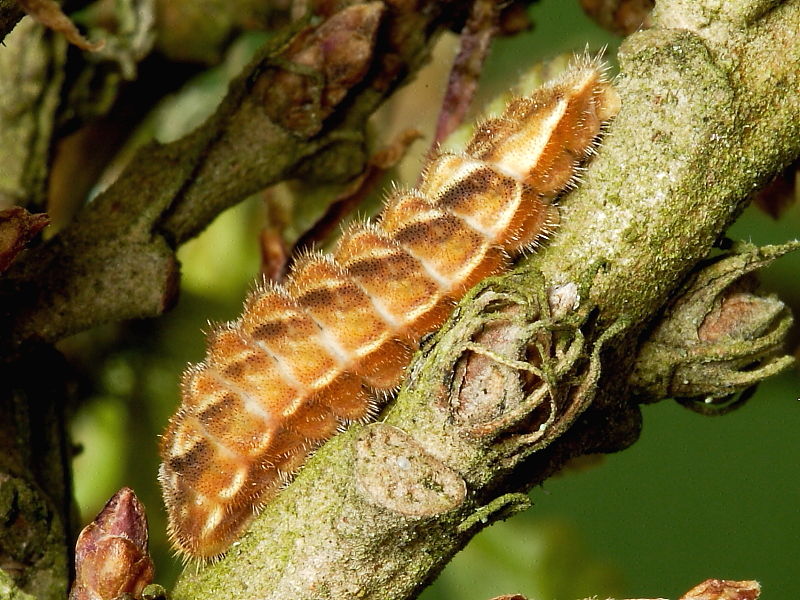
Purple Hairstreak (Neozephyrus quercus)
White-letter Hairstreak (Satyrium w-album)
Caterpillars of Copper butterflies – the Lycaeninae family
The only likely species of Copper butterfly caterpillar to be found in the British Isles is that of the Small Copper. The caterpillars of this relatively common species also feed out of sight amongst the food plant.
Caterpillars of Blue butterflies – the Polyommatinae family
The Polyommatinae caterpillar picture gallery includes caterpillars of some of the most common Blue butterflies. The caterpillars of these species are less likely to be found unless specifically searched for.
The caterpillars of the Common Blue Butterfly, Silver-studded Blue Butterfly and Holly Blue Butterfly may be common locally but feed out of sight amongst the food plant.
Silver-studded Blue (Plebeius argus)
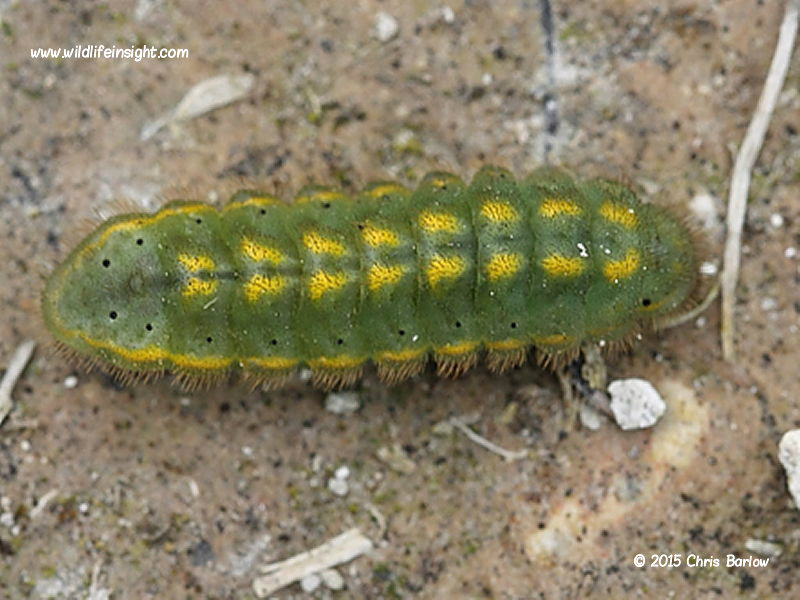
Chalkhill Blue (Lysandra coridon)
Caterpillars of the Vanessid butterflies – the Nymphalinae family
This large family includes the caterpillars of the most commonly sighted garden and countryside butterfly species in the British Isles.
The caterpillars of the predominantly migrant Red Admiral Butterfly are common and best found by looking for their distinctive nettle tents.
In some years the caterpillars of the migrant Painted Lady are found in large numbers on species of thistle.
The caterpillars of the Small Tortoiseshell Butterfly and the Peacock Butterfly are often seen in dense webs on nettle.
The distinctive ‘bird dropping caterpillar’ of the Comma Butterfly is often come across on the leaves of Common Nettle, Hop and Elm Trees.
Caterpillars of the Fritillary butterflies – the Heliconiinae family
Of the Fritillary butterfly caterpillars those of the Marsh Fritillary Butterfly are the easiest to see. Although a localised butterfly (with red data book status) where there are populations the caterpillar’s webs are easily spotted on their larval food plant Devil’s-bit Scabious (Succisa pratensis).
In common with many of the other Fritillary caterpillars those of the Small Pearl-bordered Fritillary Butterfly are less likely to be seen unless specifically searched for, feeding low down out of sight amongst the larval food plant of Violets.
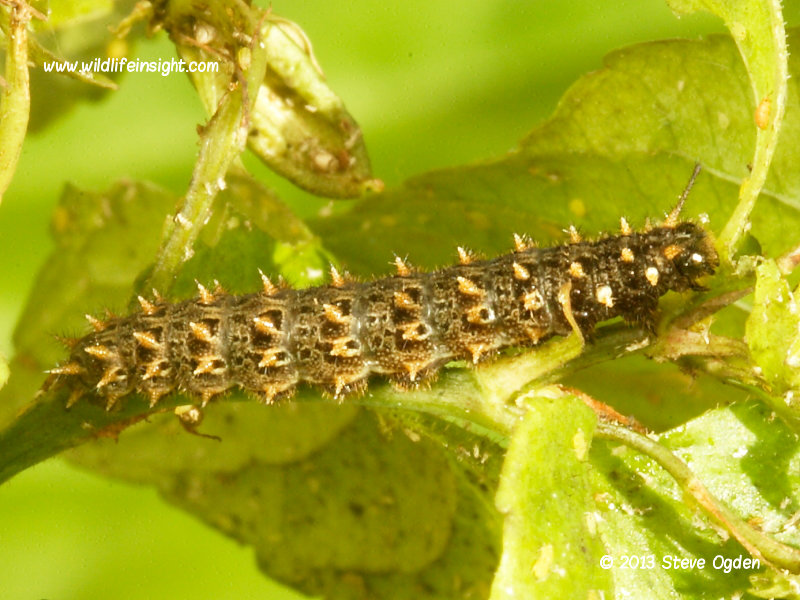
Small Pearl-bordered Fritillary
Dark Green Fritillary (Argynnis aglaja)
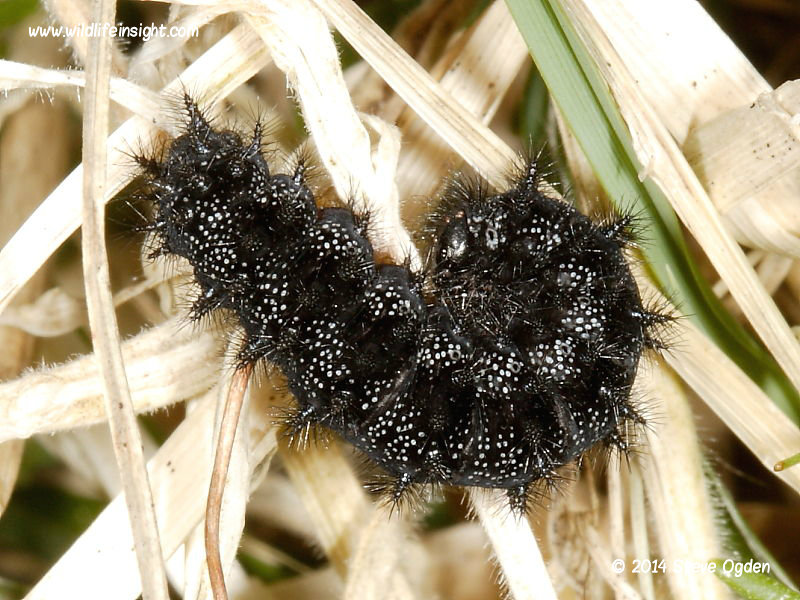
Marsh Fritillary (Euphydryas aurinia)
Glanville Fritillary (Melitaea cinxia)
Caterpillars of the Brown butterflies – the Satyrinae family
Also in the Nymphalidae butterfly family are several of the most common butterflies seen in more open countryside. These include species of ‘Brown butterflies’ that have caterpillars which live amongst grasses, often feeding at night, and are consequently less likely to be seen unless specifically searched for in the dark. These include the caterpillars of the Meadow Brown Butterfly, the Gatekeeper Butterfly and the Ringlet Butterfly.
The caterpillars of the Speckled Wood often found in less exposed habitat, around hedges and on the edge of woods, also feed out of sight amongst grasses.
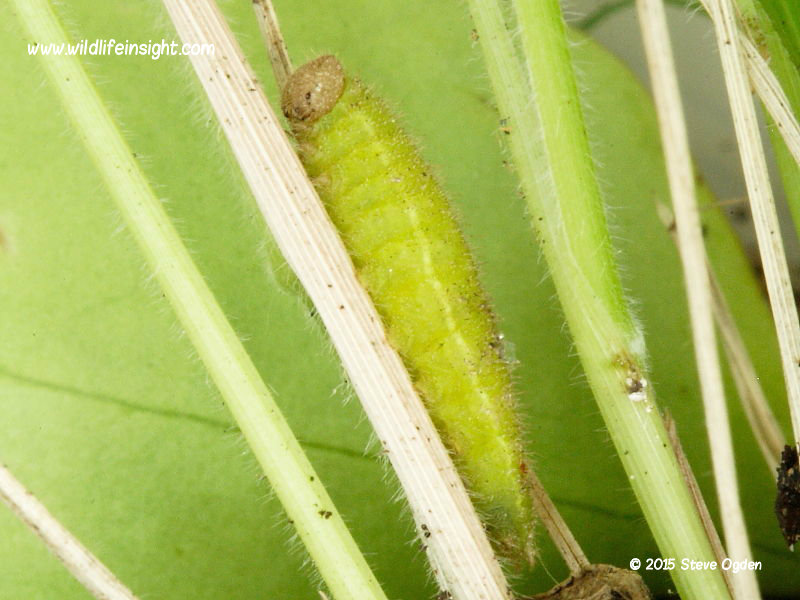
Gatekeeper (Pyronia tithonus)
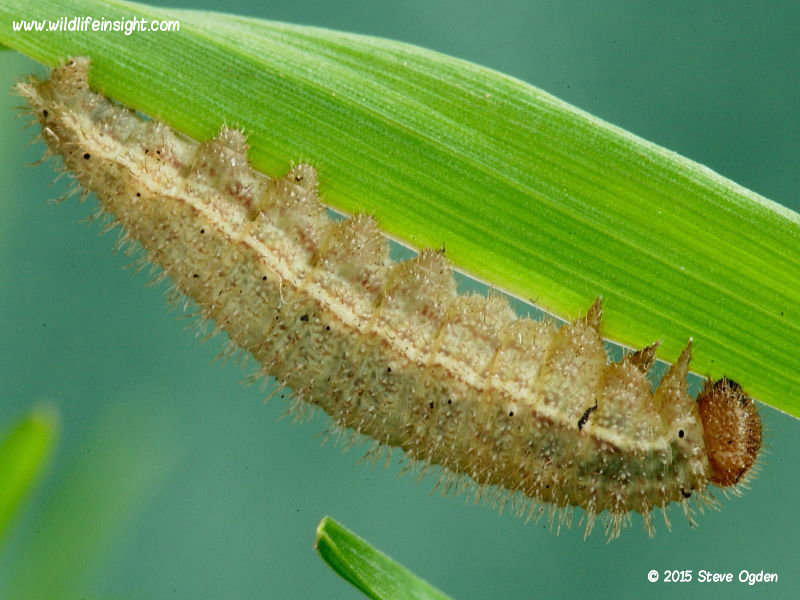
Ringlet (Aphantopus hyperantus)
Large Heath (Coenonympha tullia)
Butterfly Caterpillar Identification
If a caterpillar is not found in the butterfly caterpillar gallery it may be a species belonging to another family of insects and so it’s worth checking to see if it appears in either the moth caterpillar picture gallery, sawfly larva page or other insect larva picture gallery.
PLEASE NOTE - we have closed comments due to excess spam but are still identifying many caterpillar queries sent by email to Steve - wildlifeinsight@gmail.com - see our page on help with caterpillar identification for more information.
